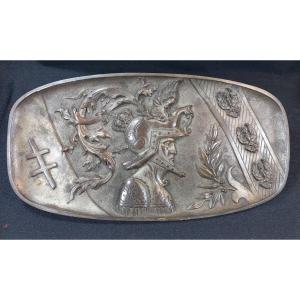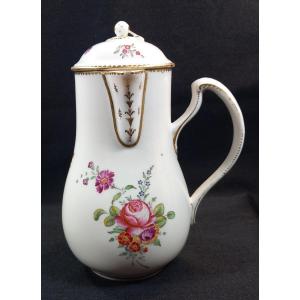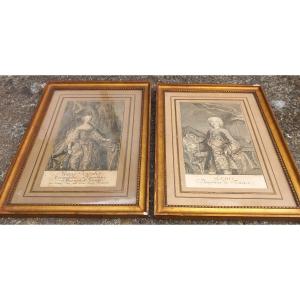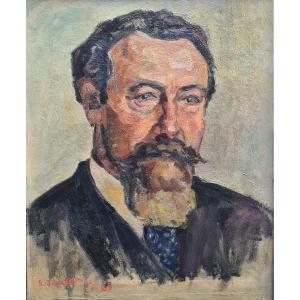"Edouard Julien Albi The Chevet Of The Collegiate Church Of Saint-salvy Tarn Oil Canvas "
Edouard JULIEN (1883-1966) Albi, the Chevet of the Collegiate Church of Saint-Salvy Unsigned oil on canvas, from the artist's studio. Edouard Julien was an accomplished French painter and lithographer, and long-time curator of the Toulouse-Lautrec Museum in Albi. As a Toulouse-Lautrec specialist, he became a sought-after art writer for publishers worldwide. Julien was born in Albi, in the Tarn (Occitanie region) in 1883. He had an uncle who was a painter and his parents ran a printing house specializing in art editions and the printing of lithographs. The young Edouard thus acquired a taste for art and a good knowledge of artistic techniques. At 17, he entered the École des Beaux-Arts in Toulouse and studied there throughout the years 1900 and 1901. He then returned to Albi and ran the family business, while pursuing his passion for art by working as an artist. In 1903, he attended the Académie d'Albi, founded by Bernard-Joseph Artigue, where he became friends with the artist Henri Gourc. In 1928, Julien left Albi again for Paris where he enrolled at the Académie Julian, but was quickly made to understand that he was an artist, not a student, and that they had nothing to teach him about painting technique. So he rented a studio and worked hard, making friends and exhibiting his works successfully. As an artist, Julien enjoyed working outdoors, and his works demonstrate extreme sensitivity. He traveled extensively in France for work, and was particularly fond of the Basque Country, where he met his wife. He also traveled to paint the magical landscapes of Spain, Flanders, and North Africa. At some point, Julien returned to Albi, which was also the hometown of another, more famous French artist he admired, Henri de Toulouse-Lautrec. This artist would play a significant role in Edouard Julien's professional life. In 1922, the Toulouse-Lautrec Museum was inaugurated in the prestigious setting of the Palais de la Berbie in Albi. This 13th-century building was originally the episcopal palace of Albi Cathedral, to which it is located. It is primarily devoted to the work of Henri de Toulouse-Lautrec and, thanks to a bequest from his parents, houses the world's largest public collection devoted to this artist. Many visitors are unaware that this collection owes much of its success to Edouard Julien's dedication. In 1934, Charles Beller asked Julien to help with the museum's curatorial work, and after Beller's death in 1951, Julien continued to run and promote the museum, assisted by a dedicated team. He assembled a remarkable collection of works, organized exhibitions by other visiting artists, and did much to research and promote Toulouse-Lautrec's work. He notably assembled an impressive collection of paintings, lithographs, and drawings, as well as every poster ever produced by Henri de Toulouse-Lautrec, and organized them into a walking progression of his development as an artist. He also produced his own posters to promote the museum's exhibitions and gained international recognition as a writer when he produced the 1960 hardback book "Lautrec." He also wrote the introduction to the authoritative book "The Posters of Toulouse-Lautrec." Today, the Palais de la Berbie is a listed historic monument and constitutes one of the best-preserved episcopal complexes in France; it is one of the two major monuments of un grand conservateur d'art, c'était un grand artiste à part entière, d'une grande modestie et d'une grande générosité d'esprit.
Edouard Julien était un artiste d'artistes. Il était estimé par de très grands peintres comme André Dunoyer de Segonzac. Il fait partie du comité d'honneur du Salon d'Automne, où il expose régulièrement. Pendant les années de guerre 1939-1944, il accueille dans son musée des artistes comme Jules Cavailles, Roger Worms, André Strauss, Yves Brayer et le sculpteur Albert Bouquillon et il est un grand ami de Françoise Desnoyer.
Edouard Julien est décédé à Vence, dans la province des Alpes-Côte d'Azur, en 1966. On se souvient de lui pour sa modestie effacée, son talent d'artiste et son dévouement au musée Toulouse-Lautrec.
A noter : accidents à la toile.
Dimensions : 55 x 46 cmthe Episcopal City of Albi, which was declared a UNESCO World Heritage Site in 2010. Today, the Toulouse-Lautrec Museum in Albi displays a portrait of Edouard Julien by Henri Gourc, as well as an example of Julien's work, a "View of Albi." Julien continued to work as an artist for most of his life, until he lost his sight in 1960. Upon his retirement from the museum in 1963, after almost thirty years of tireless work, a celebration was held for his role in what has been called the miracle of the Albi Museum, and he was made an Officer of the Legion of Honor and a Knight of Arts and Letters. In honor of his talent as an artist, the museum's board of trustees organized a major retrospective exhibition of his works, which opened in 1967, with an introduction by Henri Gourc. This exhibition presented about 100 of his best paintings, including landscapes, still lifes, and portraits dating from 1900 to 1960. In 40 years of painting, there is a clear continuity, with more intense colors after 1940, but always a delicate sensitivity. It has been said of his work that "he painted quite simply with his true qualities, the delicacy of his eye, the tenderness of his heart. He does not surprise, he charms." He was not only a great art curator, he was a great artist in his own right, with great modesty and generosity of spirit. Edouard Julien was an artist's artist. He was esteemed by great painters such as André Dunoyer de Segonzac. He was a member of the honorary committee of the Salon d'Automne, where he exhibited regularly. During the war years of 1939-1944, he welcomed artists such as Jules Cavailles, Roger Worms, André Strauss, Yves Brayer and the sculptor Albert Bouquillon to his museum and was a great friend of Françoise Desnoyer. Edouard Julien died in Vence, in the Alpes-Côte d'Azur province, in 1966. He is remembered for his self-effacing modesty, his artistic talent and his dedication to the Toulouse-Lautrec Museum. Note: accidents to the canvas. Dimensions: 55 x 46 cm


































 Le Magazine de PROANTIC
Le Magazine de PROANTIC TRÉSORS Magazine
TRÉSORS Magazine Rivista Artiquariato
Rivista Artiquariato